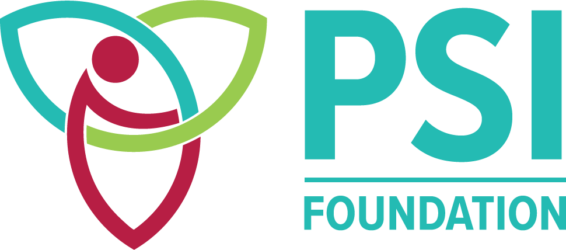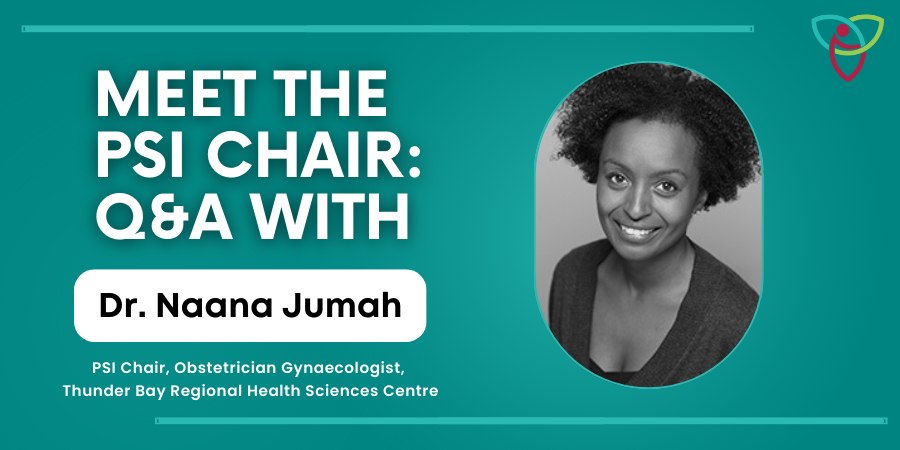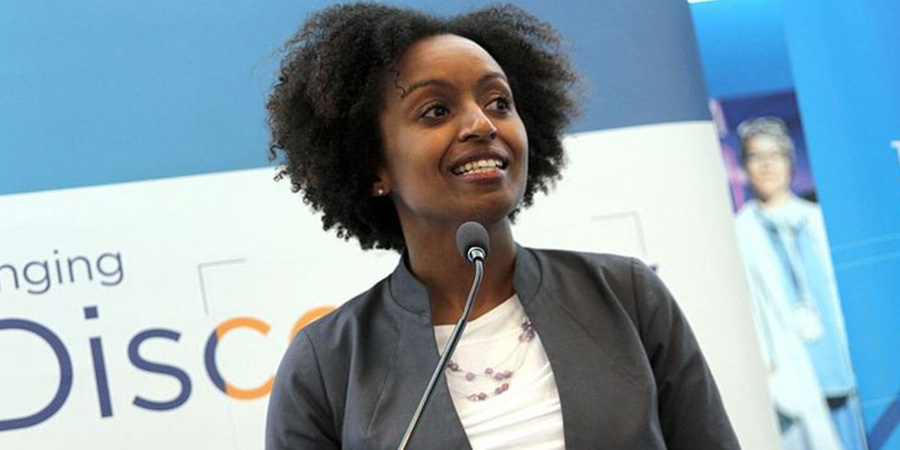About Dr. Naana Jumah
Dr. Naana Jumah is an Obstetrician Gynaecologist at the Thunder Bay Regional Health Sciences Centre and Assistant Professor at the Northern Ontario School of Medicine (NOSM). She holds an undergraduate degree in Chemical Engineering from the University of Toronto and a DPhil in Medical Engineering from the University of Oxford, which she completed as a Rhodes Scholar.
She graduated from Harvard Medical School and completed her residency in Obstetrics and Gynaecology with a specialization in Addiction Medicine at the University of Toronto. Dr. Jumah’s clinical practice and research focuses on Indigenous women’s health and addiction in pregnancy in Northwestern Ontario. She has won numerous awards for her work and advocacy in Indigenous maternal health, including the Carl Nimrod Educator Award from the Society of Obstetricians and Gynecologists of Canada.
Questions & Answers:
1. Could you use three words to describe how you feel about your new role as the PSI Chair?
“Determined, inspired and progressive.”
2. What inspired you to pursue medicine—specifically in obstetrics and gynaecology?
“I started off as an engineer and really loved the problem-solving aspect of the job, but I found it wasn’t as fulfilling for me because I missed the experience I had through volunteer work in Northwestern Ontario in advocacy and social justice where you really get involved in people’s lives.”
“Through my engineering doctoral research, I had the opportunity to collaborate with a physician and saw how, through medicine, I could combine research, problem-solving on a human scale, and social justice in one. Once I got into medicine, obstetrics and gynaecology chose me – I love the patient population; I love the variety of clinic, procedures and surgery; I love that you can have a meaningful impact in women’s lives through advances in research.”
3. What are the most memorable moments of your career thus far?
“In Obstetrics & Gynaecology, you are part of such pivotal moments in people’s lives in a way that you don’t get to be in other aspects of medicine. Day-to-day, that is incredibly rewarding. The PSI Graham Farquharson KT Fellowship played a pivotal role in establishing my research career. The award also legitimised the type of research I wanted to do at an institution that did not have dedicated clinician scientists. Without that Fellowship and the external validation it provided, I would have never been able to work with women in remote First Nations communities to co-create research priorities that addressed their reproductive health needs or to advocate for the return of Indigenous midwifery to Northwestern Ontario. While the day-to-day interaction with patients is rewarding, the impact that I can achieve through research truly brings me joy.”
4. How do you bring your experience and expertise as an obstetrician gynaecologist and clinician researcher to your role as a member of PSI’s committees, and more recently as the Chair of PSI?
“My background definitely gives me a different perspective on research, clinical practice, and health care philanthropy. Women’s health has always been marginalized from mainstream research and so has research including people living in northern, rural and remote communities. Those populations are the focus of my clinical practice and my research. They are also representative of me personally as an immigrant woman who has lived in Northwestern Ontario for over 40 years. But I also have experience working in large urban academic centres and maintain an appointment at the University of Toronto. Because of this, in Board and Committee meetings, I am able to bridge understanding from multiple research spaces: urban vs rural; resourced vs under-resourced; academic vs community-based; mainstream vs marginalized.”
5. You are one of the first PSI Graham Farquharson Knowledge Translation (KT) Fellows to become involved with PSI Foundation; you first became a committee member and now you are the PSI Chair. Can you tell us what motivated you to become involved with PSI Foundation?
“The PSI Foundation provided me with a tremendous opportunity to kick-start my career as a clinician scientist. For that, I will be forever grateful. The best way I could think of to show my gratitude for that opportunity was to become involved with PSI and hopefully pay it forward to another researcher whose life may also be transformed by a fellowship. Initially, I was invited to sit in on the PSI Grants Committee. It took a few meetings to get a sense of the organisation and the expectations but once I did, I was hooked. Almost ten years later, I am now the Chair of the Foundation—something I would’ve never dreamed of at that first Grants Committee meeting.”
6. What are your goals for PSI as the Chair?
“As PSI Chair, I would like to raise the profile of PSI Foundation and make it the recognised home for physician-led research in Ontario. We have been funding physician-led research for over 50 years and we have granted over $155 million in that time. However, if you were to ask the average clinician scientist who we are or what we do, I think there would be little awareness of the organisation and the impact we have had. At 50 plus years, we have the opportunity to build on the legacy we have established and transform into an organization that is responsive to a changing research landscape and the changing health needs of the people of Ontario. We can do more to build community amongst clinician researchers from medical school, through residency, fellowship and into practice.”
7. What do you think the future of PSI will look like?
“I’m not sure. I like surprises.”


